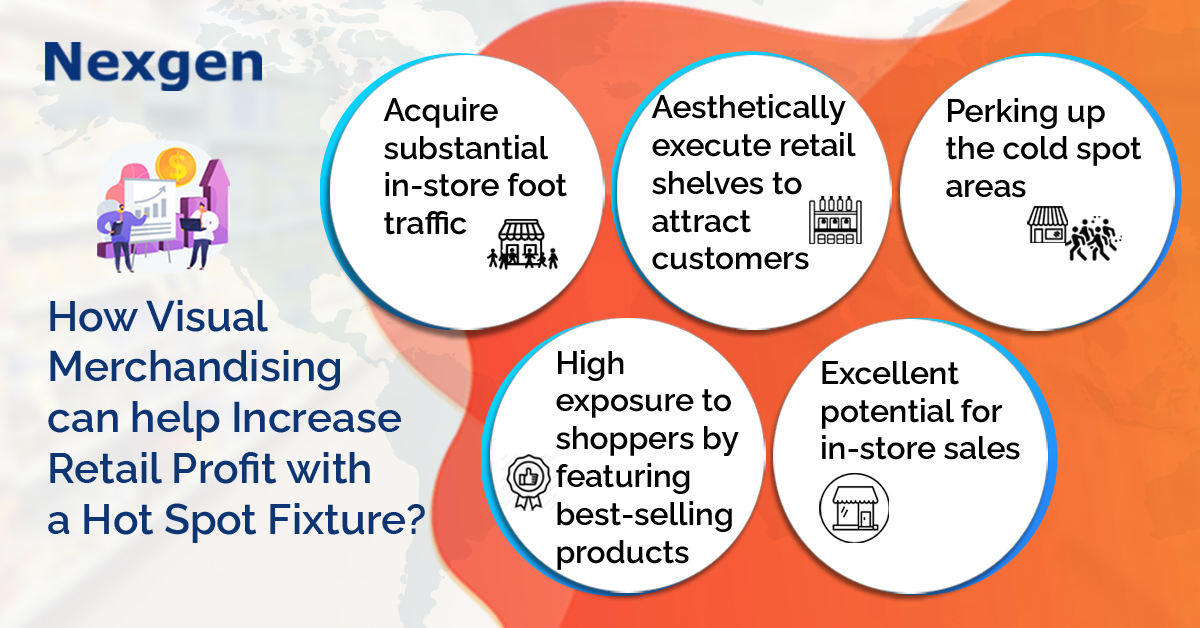When a customer enters a retail store, they consciously notice themselves being drawn into certain products. What about when a customer visits a retail store daily, do they take the same path through aisles? While part of this may be a habit, a lot of it happens due to consumer psychology and what visual merchandisers call ‘hot spots.’
But what exactly is a retail hot spot? How can retailers place hot spots in their stores effectively? And how do they plan to increase retail sales?
What is a Retail Hot Spot?
Hot spots are focal points in a store – where customers frequently look before or after entering a store or while turning into an aisle. These usually occur at points with high exposure to shoppers by featuring products that are best-selling, promotional, discount, seasonal and high-profit items with creative store layout. Depending on the store's nature, size and layout, hot spots can be located in different zones of a store. For instance, it can be located close to the entrance of the store, where passing crowd step into the store or on display windows, demo zones, bulk stacks, and caps. These zones provide good selling opportunities and wide exposure of products compared to others.
How Visual Merchandising Help to Find Hot Spot in a Retail Store?
Hot spots are the ones- which get the heaviest foot traffic and results in most retail stock turns. Retailers can decide the type of products, number of items and fixtures, category of products to be included in a hot spot with the help of a planogram software. Planogram software is the visual merchandising tool, that helps retailers in planning store shelves, layout design, as well as in executing retail shelves aesthetically to attract customers. With the help of a planogram software, retailers can place hot spots on frequently traveled routes of a store where displays are in direct line of sight to shoppers or cold spot zones. This helps to achieve special attention from shoppers and excellent potential for in-store sales. Therefore, following are the visual merchandising ideas while planning a retail hot spot:

- Choose right hot spot combination for the store: While planning the hot spot for a retail store, a retailer needs to decide what products should be added on the retail shelves. Therefore, a retailer can select the right combination of items to stand out in his store. He can select a maximum of three related items, like one primary product to cross-merchandise with the other two related products. For example, bread can be placed with jam, or a sweetened cocoa spread.
- Use color blocking: Color blocking helps to improve visual aesthetics of the product displays and increases in-store sales. During different seasons, stores indulge in visual merchandising that involves various colors on Christmas, Valentine’s Day and other Festive seasons. Planogram helps to design color blocking strategies for retail stores for better visual merchandising.
- Keep the shelves looking as full as possible: When the items sell out, make sure to restock or replace them with other items according to customer likes, market trends and season. This makes retail displays look alive, fresh and impactful. Also, remember to change the dated displays, products and signage off from the shelves as the season or promotion ends.
- Perking up the cold spot areas: Cold spots are areas less frequently visited by customers, which results in low sales. It can be overcome by keeping aisles as wide as possible to draw customers attention by placing discount labels on retail shelves.
- Counter areas: Counter areas are a great spot for last-minute reminders. Retailers can place products that customers may have forgotten, seasonal products, candies, small toys or kid’s products and other items. This helps to encourage impulse buying and unplanned purchases in retail stores.
Overview of Nexgen POG
Nexgen POG is a robust planogram builder that equips retailers to build best merchandising strategies. It is a web-based planogram software that is multi-device and multi-browser compatible. It helps to aesthetically create hot spots in retail stores to visually attract customers. Nexgen POG also has a visual analysis feature that allows planogram designs to be created according to the store’s layout, size, nature and product. It also generates various analysis reports that allow retailers to gain insights into their store sales patterns and customer behavior to improve sales.
Get Your Free Trial Now!